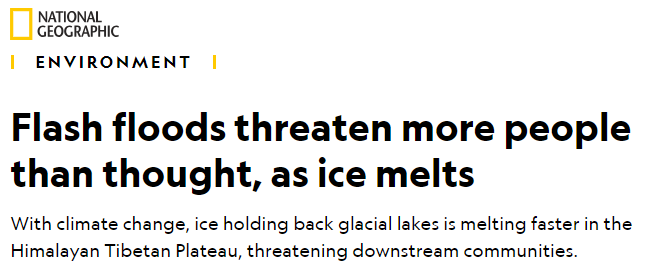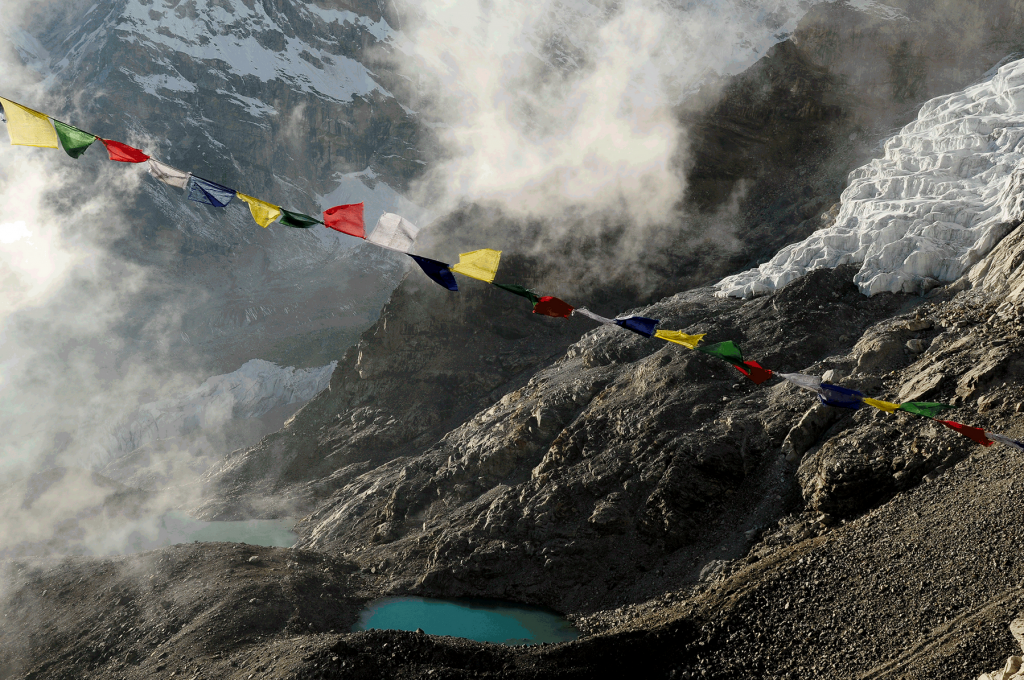Facing climate change-driven glacier retreat, glacial lake outburst floods (GLOFs) attract the attention of the scientists all over the world (see https://www.nat-hazards-earth-syst-sci.net/18/813/2018/) and also belong to the portfolio of CzechGlobe’s research activities. This issue is addressed in recent article published by National Geographic journal.
The paper of Robin G. Andrews focuses on recently released study done by the international team of Swiss and Chinese scientists led by Simon Allen (University of Zurich). In this study, the risk of GLOFs across the Tibetan Plateau is evaluated (https://www.sciencedirect.com/science/article/pii/S2095927319301501). Using an automated procedure, the scientists identified 1,291 glacial lakes and assessed both their susceptibility to produce GLOF as well as the exposure of local communities to this threat, showing that about 16% of all identified lakes can threaten downstream communities in case of GLOF, especially in the counties Jilong, Nyalam a Dingri. Some of the lakes also represent trans-boundary threat for neighbouring Nepal.
The National Geographic article brings further comments to these findings and insights into this complex problematic, including some notes from Adam Emmer – CzechGlobe scientists, who is researching GLOFs within his Czech Academy of Sciences-funded postdoc project, pointing out still not fully understood occurrence of GLOFs in space and time (see also https://www.the-cryosphere.net/12/1195/2018/). The article is ended up with ‘ticking clock’ analogy and calls for the cooperation between local communities, policymakers and scientists in order to ensure effective disaster risk management.


